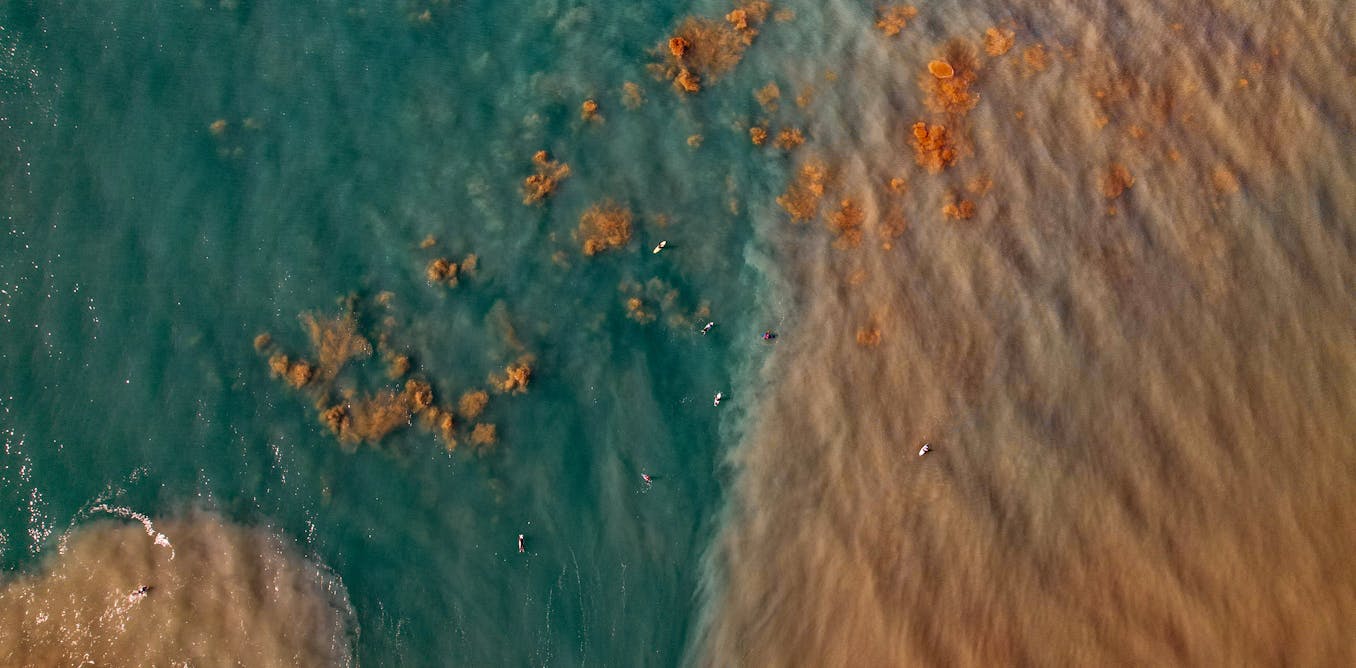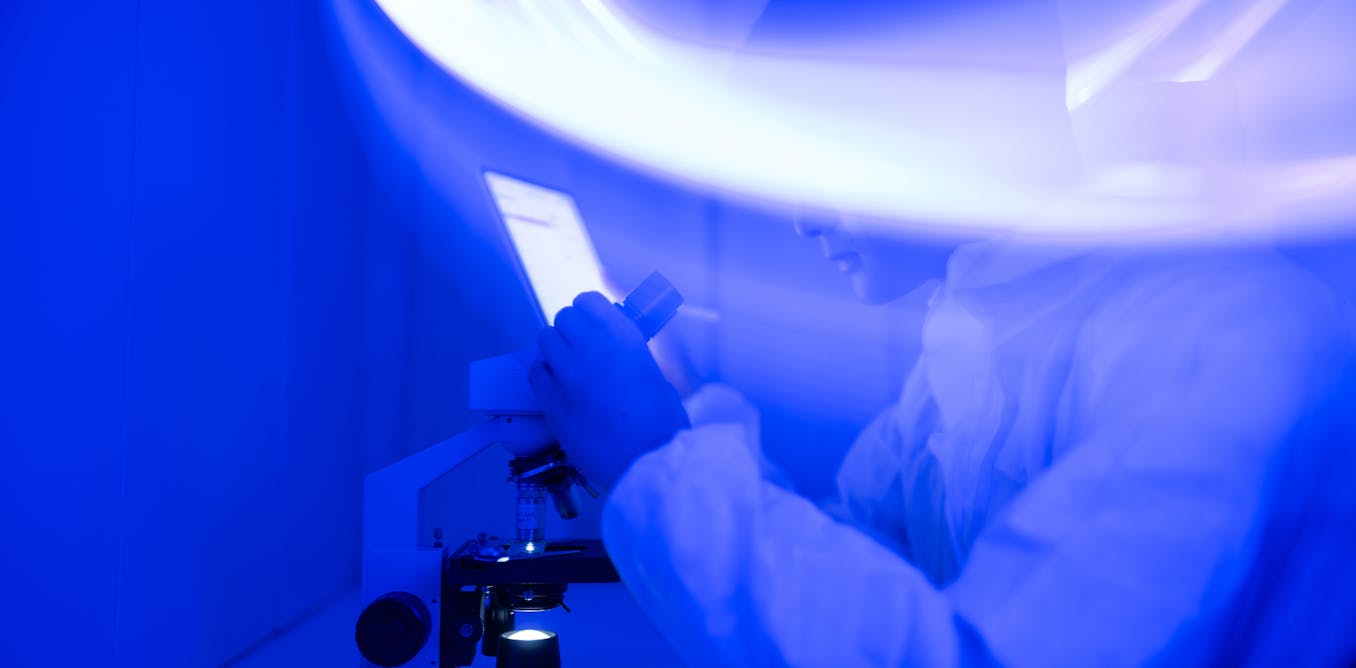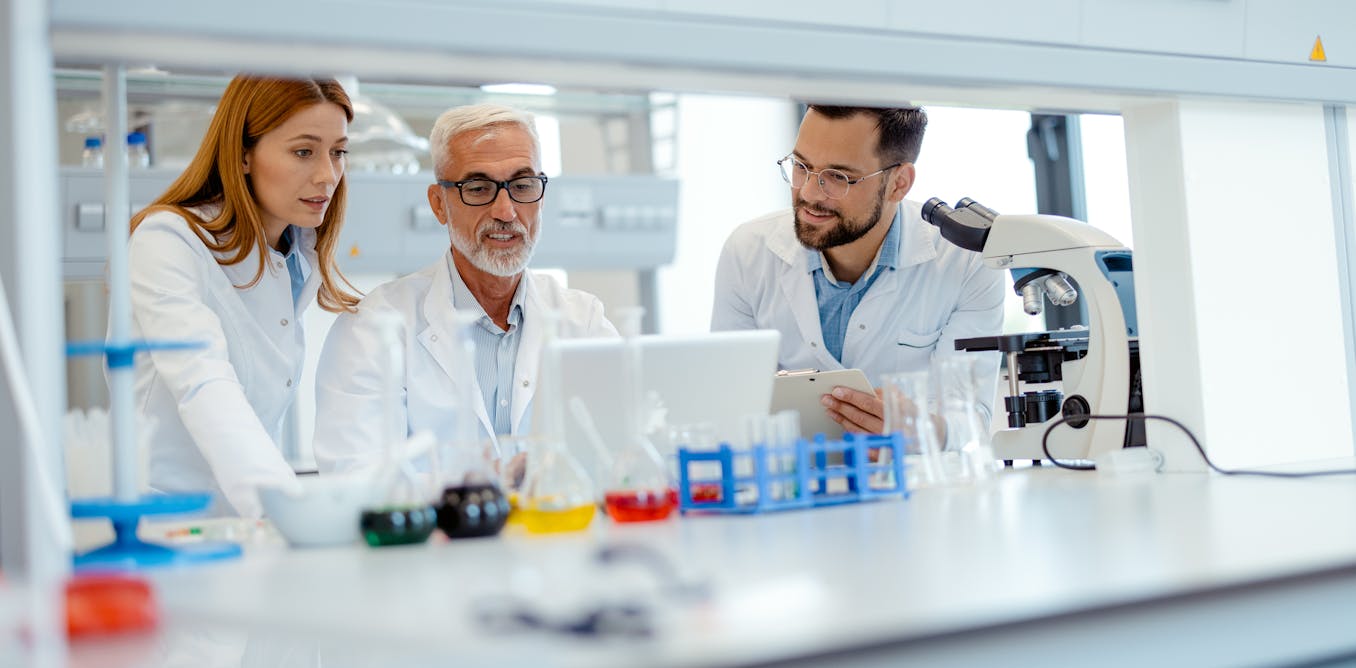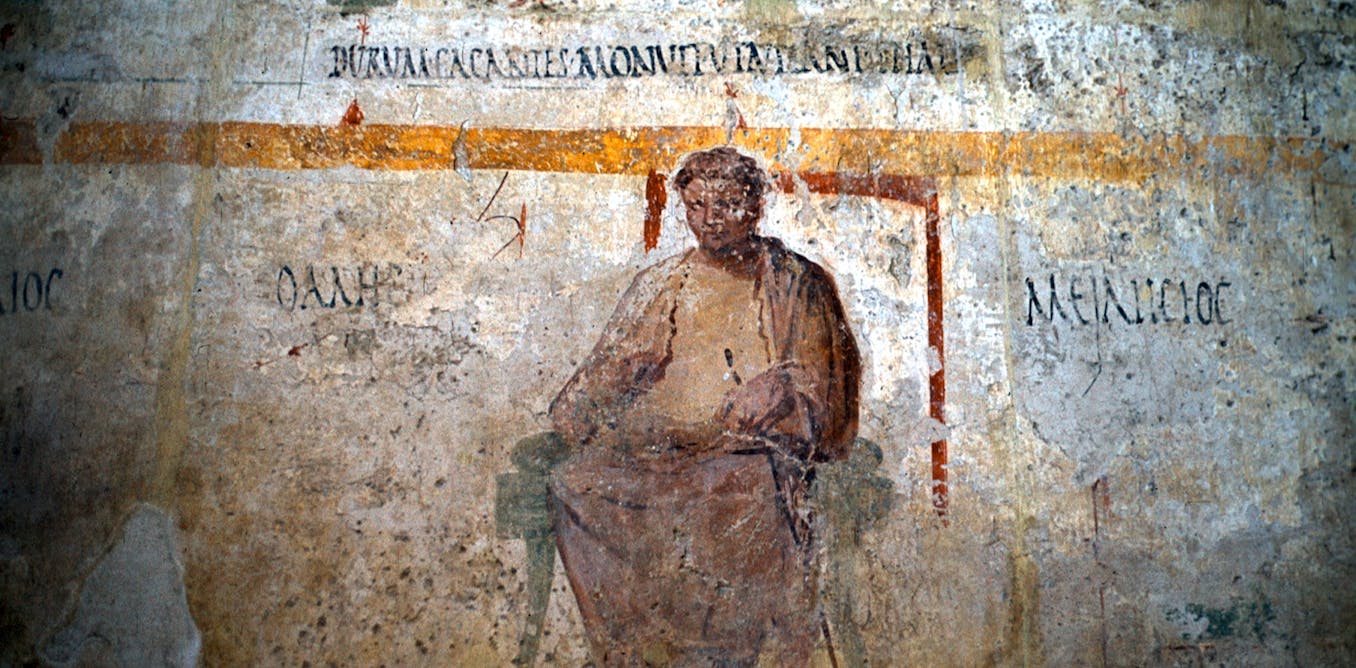BBC Earth’s investigative video on the world’s elements takes a deep dive into the fascinating history and significance of gold. Despite the fact that all the gold ever mined could fit in just three and a half Olympic sized swimming pools, it is a valuable and widely used element. From jewellery to currency, smartphones to spacecraft, gold has a wide array of uses and is found in many unexpected places.
The video sheds light on the origins of gold, which can be traced back billions of years to a supernova explosion. This process is rare, making gold a precious and scarce element. While most of the world’s gold can be traced back to the Witwatersrand Basin in South Africa, the largest stash of gold is held at the US Federal Reserve in New York. However, the gold in your possession could have a complex and potentially dark history, as it may have been mined during the California Gold Rush or in modern day gold rushes that have dire environmental and human consequences.
The video also explores the ethical and environmental concerns surrounding the mining of gold, both on Earth and in space. While there is potential to mine gold from asteroids, the process is extremely involved and expensive. This brings into question the sustainability and ethical implications of mining for gold in space. Ultimately, the video emphasizes the fact that the gold we have now is all we’ve got, making it an even more precious and valuable resource. The potential journey of gold from the stars to ancient civilizations to modern day usage adds an intriguing layer to the element’s significance.
Watch the video by BBC Earth Science
Video Transcript
So here’s an odd one. All the gold we’ve ever dug up from the Earth would fit in just three and a half Olympic sized swimming pools. That’s really not a lot of gold Yet, it’s well everywhere.
In our jewellery, in currency, Tutankhamun’s mask, royal thrones, toilets. It’s even in your smartphone, meaning odds are you’re probably carrying around some gold with you at all times.
Gold has been fixated on by humans for most of our existence. We’ve used it, stolen it, even killed for it. And because there’s only such a small amount, we’ve recycled it.
Which means the gold in your smartphone could have an interesting history. What we do know is that its initial origins go back even further. Billions of years, even. To a place far, far away in space.
Because gold is made here in a supernova, when stars explode in the ultimate spectacular death and scatter gold throughout the universe. But crucially, not just any star can make gold. Even our own sun can’t.
It has to be a special one, probably rotating very fast with a strong magnetic field. Or it’s made when two neutron stars collide. Gold is very heavy, so it’s difficult to produce such heavy elements. It has to be very high temperature and high density.
But if the process itself is rare, then the gold it creates will be rare, too. So where is it? Well, that’s an answer in two parts. Whilst around 30% of the world’s gold can be traced back to the Witwatersrand Basin in South Africa, the largest single source of gold in history.
The biggest stash of gold is held here at the US Federal Reserve in New York, which has, as of 2019 over 497,000 gold bars. If that seems like a small amount of gold,
It’s important to bear in mind that it’s virtually indestructible, meaning all the gold we’ve ever produced has been recycled countless times. So the smartphone, you’re probably watching this video on. The gold inside it could have been mined by the Romans, the Aztecs or the Egyptians.
And that gold is handy not just because it’s a great conductor, but also because it’s extremely unreactive, which makes it useful for a wide array of things.
So we use it in gold fillings, it’s used in jet engines, it’s using spacecrafts. We’re even using gold for the mirrors on the James Webb Space Telescope because gold is incredibly reflective.
People even eat gold despite it offering no nutritional value whatsoever. Although to be fair, there’s few better ways to flaunt wealth than my literally munching on something extremely rare.
In a way that kind of makes sense because the main use of gold around the world is wealth. Whether that’s as a status symbol or just as a currency itself.
If you were picking an element from the periodic table to be your money, you wouldn’t want one that was super reactive or flammable or too difficult to work with, or a gas or radioactive, but you would need it to be really rare. So all of those requirements together lands us with gold.
It helps us well that it’s beautiful and shiny. It’s a beautiful material, but it also carries with it these kind of negative characteristics the lust for gold, greed, idolatry, the environmental and human costs of gold. Which means that any gold you have has a potentially dark history.
For example, it could have come from that one American dude who basically stumbled across a literal treasure trove of gold glinting away in a river in California in 1848. That sparked the California gold rush, which saw hundreds of thousands set off west, one of the largest migrations in U.S. history.
The gold rush led to the creation of the state of California, which rapidly became an economic powerhouse. It sped up the buildings of railways spanning the country, towns became cities, and the US became a hub for global industry.
But mining was tough work, and alongside it came gambling, prostitution, violence and racism. Lots and lots of racism, especially against Native Americans. In 1850, the Act for the Government and Protection of Indians was passed, which included facilitating the separation of Native American Children from their families.
This contributed heavily to the California genocide, during which the indigenous population of California plunged from as many as 150,000 people to around 30,000. And this human cost went hand in hand with environmental damage.
Dams changed the course of rivers, sediment clogged waterways, and mercury, which is used as an amalgam to extract gold from ore during the mining process, flowed downstream. So that gold you’re carrying around could have a legacy of death and destruction. And that legacy isn’t necessarily that old.
While we think about the gold rush as having happened in the 1800s there are modern day gold rushes throughout the world, and this is where, in fact, about a fifth of all the gold on the world market comes from.
Many of these modern gold rushes tick the same boxes as their more famous California cousin. Artisanal miners working in precarious conditions, mercury pollution and, of course, dire environmental consequences. In the Peruvian Amazon alone, over 250,000 acres have been cleared since 1984.
But if mining gold has the potential to cause so many problems, what’s to stop us from making our own?
Well, many of our greatest scientific minds have tried. In 1669, Hennig Brand tried to make gold from buckets of urine. Yep, he was that gross. And to be fair, he did accidentally discover phosphorus in the process.
Whilst Isaac Newton’s only accomplishment in his quest to produce gold across the 17th century was to accidentally give himself mercury poisoning. Thankfully, nowadays, neither urine nor hospitalisation are necessary requirements for the process of making gold. As scientists can actually make it using a particle accelerator.
Except it’s only atom by atom, because making a single bar would take an unbelievably long time, and the energy used to create it would be enormous. So it’s not really anything more than a pipe dream.
But there must be gold out there somewhere. We can’t really have used nearly all of it up making fancy jewellery. Can we?
Well, it turns out there’s actually a few more places we can find gold, like here, in the ocean. But good luck trying to get it, because it’s very spread out with a concentration of about one gram per 100 million tons of water.
So although it does exist, it’s very likely to remain where it is. But what about further afield like here? Because yes, there’s even gold in space, there’s some on the moon, and there’s even been genuine talk of stripping gold from asteroids.
Nasser have been investigating where we might be able to get gold from, and they’ve actually been looking at an asteroid called 16 Psyche, which has got, I think, 700 quintillion USD worth of gold potentially in that asteroid.
The methods of mining either deep sea or in space are obviously very involved and extremely expensive to do. And space mining and deep sea mining present some ethical and environmental concerns around the mining of gold as well. So we’ll have to take all these things into account.
So for all intents and purposes, the gold we have now is all we’ve got, which makes it that bit more precious. It’s hard to verify what percentage of gold in circulation is from ancient times. According to the World Gold Council, two thirds of the current gold stocks have been mined since 1950.
But beyond that, because gold has been recycled so much across history, it would be difficult to pinpoint exactly where all the gold in your possession originated from.
But at the same time, isn’t that kind of the coolest part? Think about it. That gold could have traveled from the stars via ancient Rome or Latin America all the way to your pocket. And the best part is that could only just be the beginning of its journey.
Every mobile phone that we throw away currently has about 50 milligrams of gold inside, and that could be extracted and then used again. Because that’s the thing. Gold will continue to be used for the rest of human history in new and fascinating ways that we cannot predict.
Years from now, the potential for a future gold bracelet to have its origins in a smartphone could be as exciting as the prospect of ancient Roman gold being in our jewellery today.
So next time you look at your smartphone, your jewellery, or even your watch, just think about the incredible history that, that object may be privy to and all of the future history that it may become a part of. Hydrogen. Numero uno in the periodic table. Practically elemental royalty.
It may be the smallest atom in the universe, but it could have the power to save the planet. It’s key to us moving to a clean energy future. Providing us with an unfathomable amount of energy. It’s a potentially almost limitless source of energy.
Whilst also having the potential to bring life as we know it to a grinding halt. Man has firmly in his grasp, the forces of progress and his own destruction.
But how can something from the very dawn of time itself, formed just minutes after the Big Bang, be both the key to our salvation and our extinction. The answer to that question is written in the stars.
In order for stars to burn and shine for billions of years, they convert hydrogen into helium through constant nuclear reaction.
This process is known as fusion, where atoms slam together to form a heavier element. We used to think the sun was compositionally identical to Earth until Cecilia Payne-Gaposchkin concluded in 1925 that stars are almost entirely composed of hydrogen and helium, meaning our sun is literally a giant fusion reactor.
This was a huge shock at this during this time. In fact, one of the pre-eminent physicists of the day, Henry Norris Russell, told her this was wrong and that she should omit it from her PhD thesis at Harvard.
And she she left it in, but she ultimately called her results almost certainly not real. Frustratingly, a few years later, this same physicist, Russell, later changed his mind, recognised Cecilia was correct, and published his own results in his own paper, and he ended up largely receiving credit for this discovery for quite some time, due in part to the fact that Cecilia was not afforded status at Harvard University on account of being a woman.
Classic. Something she noted in her autobiography. I note it here as a warning to the young. If you are sure of your facts, you should defend your position. Just a note to all self doubters.
Although tiny, the power released by hydrogen atoms is staggering with potentially limitless applications. Alas, so far on earth, humans have mostly used it for annihilation.
This is Ivy Mike, the first full scale hydrogen bomb test. In 1952, the US blew Mike up on the Pacific Marshall Islands. It vaporised an entire island and left a crater more than a mile wide.
Hydrogen bombs are the most powerful weapons humans have ever created, roughly a thousand times more powerful than the atomic bombs that flattened Hiroshima and Nagasaki and killed more than 200,000 people.
And six countries are confirmed to have them. The United States, Russia, the United Kingdom, China, France and India. And whilst so far none of them have been used in battle, they remain a persistent threat to life as we know it.
But some people believe that we could use this immense hydrogen power for good. We would like to create a star in a jar. So the reason we want nuclear fusion to work is that it’s a potentially almost limitless source of energy that doesn’t release carbon.
But there’s just one small problem with this method. It doesn’t work yet. It’s a very long term project and we have a very near term issue of climate change.
Whilst work is being done internationally in France in the form of the ITER project, an international nuclear fusion research project focusing on building the world’s largest experimental fusion reactor by 2025.
We are still a long way away from developing fusion here on Earth. Luckily, hydrogen may pose the answer to our climate problems in other ways. As an alternative to fossil fuels. What’s exciting about hydrogen is that we can burn it without releasing any CO2 because there’s no carbon in the system.
In theory, burning hydrogen produces almost entirely water vapour, pure green energy. That’s why it’s such a buzzword right now. It has the potential to help power our cars, ships, planes, trucks.
Governments around the world have pinned their net zero hopes on hydrogen, and many say Hydrogen is the key to meeting the goals of the Paris Agreement. But there’s a problem. For all hydrogen’s abundance in the universe, we have to make the hydrogen we burn ourselves, and that’s where it gets a bit tricky.
Because it turns out our wonderful source of green energy isn’t always so green. In fact, it’s more like a Jackson Pollock painting. So hydrogen is only as clean as where it comes from. And to figure out where it comes from, we can look at a colour chart.
Whilst hydrogen is colourless, we use colour codes to identify different types. There’s grey, brown and turquoise hydrogen, which are all produced using fossil fuels. There’s blue hydrogen, which is also produced from fossil fuels, but the emissions produced can be recaptured and stored underground.
Or yellow and pink hydrogen, which are generated through electrolysis and nuclear power, respectively. And then, of course, there’s our good friend green hydrogen, which produces no harmful greenhouse gas emissions. But here’s the kicker. Unfortunately, about 95% or more hydrogen today is made from some sort of a hydrocarbon source.
Even blue hydrogen, the one where you supposedly recapture the CO2 released emits 20% more carbon than simply burning the gas for heat, because even the carbon capture process itself includes burning natural gas. So, yeah, to make our wonderful fossil fuel alternative, we’re using a fossil fuel. That doesn’t sound right.
The obvious answer, of course, is to use green hydrogen, the type made from clean, renewable energy through electrolysis. The problem is that’s really expensive. But green hydrogen can also be used to store renewable energy, and this is where it may help save the planet.
Renewable energy is intermittent, and so we need a way to store that energy so that we can actually provide a stable electrical grid. We can take excess electricity from the grid, make hydrogen, and then store that hydrogen for times where the demand on the grid is higher than the grid can produce.
But you can also use hydrogen directly in vehicles. Japan, Germany, the U.S. and Orkney already have hydrogen refueling stations where you can top up your vehicle. And tests are already underway on planes powered by hydrogen fuel cells. But let’s not overreach here because hydrogen still has another major hurdle to overcome: energy density.
Put simply, it means that hydrogen takes up more space to produce the same energy as something like methane, which is bad because it makes it less economically viable.
Say you’re looking to transport a load of cargo on a ship. You want to move as much stuff as possible for as little money as is needed. Hydrogen might take up 20% of that space, but something like methane or a fossil fuel takes up just 5%, which leaves more room to transport cargo.
But what if there was another way of storing that energy? So another avenue is to take that excess electricity. And instead of producing hydrogen, you produce a metal like aluminum. We can take that aluminum reacted with the water that the boat is floating on and produce heat and hydrogen on demand.
So we get to use it, but we don’t need to store it or transport it. And by it I mean hydrogen.
So even though hydrogen may not immediately seem like a magic bullet when it comes to green energy, and let’s be honest, it’s not. It can and will play a part in the solution to saving our planet.
If we make hydrogen using the water we have all around us, we can produce a potentially infinite amount of green energy. And it’s amazing to think that all this power with its tremendous applications, can come from this teeny, tiny little atom, the smallest in the universe, but just quite possibly the most significant.
This guy really needs to stop dancing. Not just because he’s terrible, but because the world is running out of helium. But what does that mean for the Large Hadron Collider, MRI machines and the new space race to mine the moon? Because it turns out helium is way more interesting than balloons.
It’s actually essential to our modern way of life. And the fact it’s running out. Well, that is a very big problem. So why is it running out? Well, let’s start at the beginning. The very beginning, right back to the big bang. Well, a few minutes after it.
That’s when the first protons and neutrons collided to form hydrogen, which then fused into the very first helium nuclei. This fusion of hydrogen to helium is in the core of every single star in the universe. And this fundamental reaction paved the way for the creation of all other elements.
But even today, 13.7 billion years after the Big Bang, helium still makes up about 25% of the entire universe. So again, how are we running out of it here on Earth? Well, for all its abundance in the universe, it’s actually very rare on our planet.
Not only that, but it’s the only element light and unreactive enough that it can escape Earth’s gravity and leak out into outer space. The other issue is that we’re using it up. At the current rate that we’re using helium. There have been estimates of about a 100-to-200-year supply.
It’s the very definition of a non-renewable resource. So what are we actually using it for? Well, for one, this. The touchdown tradition of the University of Nebraska’s American football team, where they release thousands of balloons after the first touchdown. Go Cornhuskers…?
OK. We’ll come back to this seemingly random example in a minute, because it’s actually surprisingly relevant to the story of helium. But helium itself plays a fundamental role in the world today. It’s essential in everything from space exploration and quantum computing to medical equipment and the Large Hadron Collider.
Its extremely low boiling point makes it perfect for cooling down super magnets. Meanwhile, it’s non-reactiveness makes it ideal for producing the semiconductor chips that go into just about every computerised device on the planet. Whatever you’re watching this on, almost certainly used helium to make it. Imagine a world without helium.
We wouldn’t have MRI instruments for medical diagnostics. But also imagine all the things where computer chips are used. Imagine that whole industry was unable to function if we didn’t have this special substance. And that makes the fact that it’s running out a pretty huge deal.
So much so that the University of Nebraska tradition I mentioned? [Touchdown pass] Yeah, well, in May 2022, this 60-year tradition went on hiatus and all because of the helium shortage. So thanks, Nebraska for taking one for the team.
But how on Earth have we got to a point where we’re relying on college football teams to pitch in and help a global shortage? Well, that story begins with the US thinking helium would win them the war. Yeah, back in World War One, the Germans had hydrogen zeppelins.
The US military was jealous. So when a different light gas – helium – was discovered on American soil, they started to store huge amounts of it in a cave in Amarillo, Texas. The National Helium Reserve was born. But fast forward to the 1990s and the US government decides:
Time to privatise this bad boy. So it dumps helium onto the open market. Cheap helium for everybody. Problem was, that left no incentive for companies to produce their own helium, or recycle any they already had. Enter Helium shortage 1.0, circa 2006. And since then we’ve been hit by shortage after shortage.
Today there are four major suppliers of helium the US, Qatar, Algeria and Russia. To make matters worse, many of the world’s helium plants were struck by disasters or political unrest in 2022. Welcome to Helium Shortage 4.0. And now to throw another curveball in the mix.
The US government put the rest of its helium up for sale in 2022. So what happens now? This is a very difficult thing for us to imagine. We would be ceding control of our helium resource to a private entity. We don’t even know if helium will continue to be stored there.
So if not there, where? Most of the helium left on Earth that hasn’t already escaped into space has been trapped in the Earth’s crust. In many cases, helium is extracted as a byproduct of natural gas. But in Arizona, helium exists in these geologic layers alone.
So for some, the answer is to mine for helium. What happened in 2018 is it got listed as a ‘critical mineral’, and that’s sort of elevated its status for extraction. So new permits are being issued for helium actively now. But it’s already proving contentious.
In Arizona, the land surface rights are owned separately from the mineral rights underground, so a landowner can have the mineral rights sold from underneath their feet to a company that wants to come drill and extract.
We are now at the beginning of modern helium extraction, and so there are no studies on what the environmental impacts are. So who gets to decide about the extraction process? The same kinds of stories that the nation, the federal level told itself and others about uranium, it is now telling about helium.
And so if national security is the most important thing and we’re in wartime and we need to protect our citizens, then mining X element, whatever it is, to support that national security and defence, is the highest priority.
If you’re living on the land and you care about your future generations and your children and your water and your security, then not mining and not risking extraction impacts at all, is the most important priority. I, as an environmentalist myself, have been convinced that there are safe ways to extract helium.
So we need more helium, but we also need to stop our reliance on fossil fuels. Not to mention a chequered history, to put it mildly, of marching into protected environments and mining them to death. And it’s not going to get any simpler. Because now we found an even more exciting use for helium.
Helium-3 has been identified. As the potential fuel for what’s called fusion energy. Ok, time to get technical, because up until now we’ve been talking about a specific type of helium, helium-4. Now I want to introduce you to helium-3, an isotope with just one fewer neutron in its core.
But that one single neutron makes a huge difference between a supercooling liquid, and a potentially game changing source of energy. Right now, the way that we obtain nuclear energy on Earth is by fission. You hit an atom, you split it, and in the process you generate energy. Fusion is totally different.
Here you bring two elements, two particles and you fuse them. And in the process of doing that, which requires a lot of energy, then a lot of energy is also released and is released in directly into electricity.
You don’t have to go through heating and then steam and it producing electricity, it directly goes into electricity. And even better, the residue is helium, just helium, the one that again, you can use for for inflating balloons. So it’s a non-radioactive waste. Cool. So where do we get helium three from?
We have a little bit on Earth, including some from dismantling nuclear weapons. But it turns out there’s another source of it here. Helium-3 comes from the Sun and that accumulates on the Moon at larger quantities that we find here on Earth because our magnetic field protects us from there.
Overall, on the moon, there’s estimated to be about a million tons of helium-3. And that tantalising treasure is sparking a whole new space race to get back to the moon. Leading the race, the US and China. China is already searching for helium-3 in lunar rocks brought back in 2020,
And they have plans to launch a robotic lunar mission in 2025. Meanwhile, NASA’s Artemis program will see humans set foot on the moon again in 2025, to explore the satellite South Pole. So whether it’s mining the moon for helium-3 or trying to preserve the helium-4 here on Earth,
You’re probably about to hear a lot more about helium in the coming years. But does that mean we’re just done now for helium balloons? Well, not necessarily. Those party balloons touch more people’s lives and make more people care about helium than they would about other noble gases.
You know, nobody’s really excited about argon for the most part. And so really, helium is special. And again, if we look at it as this special, almost magical substance, then maybe we can see that it’s really a gift of the universe to us
To have this thing that that allows us to lift balloons and also power rocket ships. What else on earth can do that for us? So I am not a balloon denier. This is how I put it. I think that people see the magic in helium and it should be shared.
This man hopes nitrogen will help him live forever. I’m hoping to get a beautiful cyborg body in the future. That’s the only way I’m going to get a six pack. So cryonics is the idea that if you can’t be saved by current medicine, maybe future medicine could save you.
If you could just be stored in a frozen state until the future. Dr. Sandberg has elected to have his head preserved in liquid nitrogen at the chilly temperature of -196 degrees Celsius before he dies. This medallion is instructions for the hospital that if I’m dying, they should call a number in America,
Cool me with ice cubes, keep the blood flowing, inject various medications, and hopefully we can then get started on freezing me. That freezing process relies on liquid nitrogen preserving his brain until scientists work out a way to reanimate it. Ok the chances of revival are small,
But if any element was going to help us in our quest for immortality, it makes sense that it would be nitrogen. Because no other element has had such an impact on the growth and potential death of our species, responsible for the huge population boom in the past 50 years
And for the death of millions. And nothing echoes this balance between life and death better than the story of Fritz Haber. This German chemist changed the world forever. If any single person was responsible for the lives of about half the people on Earth today, Fritz would definitely have a strong case.
And it’s all because of one ingenious invention. This solved one of the biggest problems our species has ever faced. At the turn of the 20th century, our fields and soils were running out of nitrogen. Without nitrogen, there is no life. The fourth most common element in the human body,
It’s essential in amino acids and proteins, hemoglobin in our red blood cells, and even in our DNA. Nitrogen makes up about 3% of your body by weight. So for most people, that’s like if you took all of your neck, and it was like all built of nitrogen,
That would be like the equivalent. Chlorophyll that makes plants green is a nitrogen compound. So without nitrogen there is no photosynthesis. All the crops we grow are dependent on nitrogen supply. But if you farm the same crops in the same soil year on year, eventually that nitrogen will get used up.
Which is exactly what was happening at the turn of the 20th century. The idea that humans were gonna run out of food was a major, major concern. And we didn’t know how to grow more crops. Well we knew, we knew we needed nitrogen, but we didn’t know how to make that nitrogen.
The great irony about nitrogen is that we’re bathed in it. Our atmosphere is 80% N2 gas, but that N2 gas is not something that’s easily accessible because it’s triple bonded, which means it’s really tightly connected. It takes huge energy and power to break those bonds apart
And make nitrogen into a form that biology can use. The only organisms that could take that and break apart those triple bonds are bacteria. And so the big chemistry challenge was to basically figure out how to do what the bacteria do. Enter good old Fritz.
Using high pressures, high temperatures and a catalyst, he invented a way to mix the nitrogen in air with hydrogen to make ammonia. And that first drop would change the world forever. Then Carl Bosch scaled it up and the Haber-Bosch process was born.
What the Haber-Bosch nitrogen has done is allowed us to produce more fertilizers on planet Earth, allowing the human and livestock populations to increase massively. About 50% of the human population is alive today because of the Haber-Bosch process. So Haber’s invention has literally transformed our planet. Amazing. What an absolute hero.
So why don’t we see statues of Fritz Haber everywhere? And why did some of his own colleagues boycott the Nobel Prize ceremony when he won it? Well, Fritz Haber didn’t always use his scientific brilliance for good. Just a few years after his earth-shattering invention, World War I began.
He also used his chemical knowledge to develop things like chlorine gas and went to the front line to see it work. And eventually those same types of materials were used to kill millions of Jews. So it’s a very rich, sad, deep, complex history.
There’s also a dark side to the nitrogen part of Fritz Haber’s story. Nitrogen atoms so desperately want to bond to each other that when they do they release a massive amount of energy. Explosively so. This means that in the First World War, nitrogen supply for Germany was really important
In sustaining a manufacture of munitions. And thanks to Haber’s life-affirming invention, World War I Germany now also had an industrial supply of not-so-life-affirming explosive material. If you look at the whole of the 20th century, it’s been estimated that there are 100 million deaths associated with nitrogen compounds as explosives.
And this chequered history is why so many people ghosted him when Haber received his Nobel Prize. Although, speaking of the Nobel Prize, Alfred Nobel himself ain’t so squeaky-clean either. Alfred Nobel made a tidy fortune and could fund his prizes because he came up with a clever way of taking nitrogen-rich compounds like nitroglycerin
And turning them into practical explosives. So lovely little life-giving nitrogen clearly has a bit of a problem with blowing things up. But there are also less explosive ways that nitrogen is linked to death. Ironically, by causing too much life.
If it gets into a watercourse, it means that algae in the water grow too much, leading to algal blooms, green pea soupers of the water. When those decay they remove the oxygen from the water ultimately killing fish. So it’s a real environmental problem in the watercourses.
Typically that’s caused by overusing the same fertilizers that help us feed the world. And if you drink too much nitrate in water, that’s increasing risk for colon cancers and other health problems. In air pollution, nitrogen compounds form fine particulate matter. Breathe it deep into your lungs and there’s problems for
Heart diseases and respiratory diseases. One original nitrogen atom cascading through the environment can affect air quality, water quality, climate, all those different effects. As nitrogen is released into the environment, this cascade is forming lots of different nitrogen compounds. One of those is nitrous oxide. It’s a powerful greenhouse gas changing our climate,
And it’s also one of the main stratospheric ozone-depleting substances. Right. This is all getting a bit grim. Time to lighten the mood? These people are all off their face on laughing gas. I’m sure they got it from their dentist or their doctor. How is this related? Well, laughing gas is also known
As nitrous oxide. Released from burning fossil fuels, it’s actually about 300 times more harmful to the climate than CO2. So what can we do about nitrogen pollution? On an individual level, we can do things like eat less meat, eat more locally, bike to work, etc. It’s not just about individuals though,
We also need larger-scale policy changes in terms of how we deal with industrial farming, how we regulate fertilizer use, things like that. But all this nitrogen pollution here on Earth has got some people thinking about life in a totally different way. About finding life. On other planets.
Because if humans have the intelligence to douse ourselves in nitrogen pollution, maybe extraterrestrials would do the same. It’s a reasonably good guess that if there’s life out there, probably it uses nitrogen at some part of its life cycle. On Earth, some of that nitrogen makes its way into the atmosphere
Where if it accumulates in a large enough amount it could be detectable with space telescopes. So if we were to study an extraterrestrial planet and we see large amounts of nitrogen pollution, this could be evidence for technological processes like large-scale agriculture or combustion. Back here on Earth,
Maybe it makes sense that the final part of nitrogen’s story is neither life nor death, but perhaps the finest of fine lines between the two. Immortality. Cryonics is the idea that if you can’t be saved by current medicine, maybe future medicine could save you.
If you could just be stored in a frozen state until the future. And that frozen state is maintained with liquid nitrogen. People in cryonics call this a state of deanimation. Not currently alive, but also not totally dead, just waiting for a few scientific miracles to reanimate them.
Cryonics is controversial because it’s kind of half of an experiment. It’s easier to freeze somebody, it’s much harder to revive it. Many scientist would say, wait a minute, we haven’t succeeded even with a mouse yet, and yet you want to put your head in the freezer?
Oh, and yes, it’s just Anders’ head that’s being frozen. The reason I opted for just preserving my head is that first I’m an academic cheapskate. And second, this body’s not that great. I want to have a cyborg body in the future. That’s the only way I’m going to get a proper six pack.
Many dismiss cryonics as a sci-fi pipe dream. But one thing is for sure. Nitrogen’s story is one inextricably linked to life, death and everything in between. So there is a fundamental paradox inside nitrogen. Studying the nitrogen cycle has actually made me feel more comfortable with death because every time somebody dies and decomposes
In whatever way that will happen, those elements are returned to the planet, and so they get recycled throughout the whole planet eventually, through everyone that you love. And I find that quite comforting. This is a tale of the link between matches, dehydrated pee and your bones.
Of the birth of the British labour movement and the first trade unions, global wars over bird poo, and ultimately, how this single element has helped double the world’s population. But also how the fact that we’re literally flushing it away, may just cause a particularly bleak future where we can’t produce any food.
The issue with phosphorus is if we don’t do something about it now, the future that we leave our children and our grandchildren is looking bleak. Grim. But we’re not there yet. So how did we get here? The first thing to know about phosphorus is that it’s a finite resource.
What we’ve got left on Earth is all we’ve got. And phosphorus is very rare in the universe. This precious element is made only in some stars, with the majority of it coming when bigger stars explode in a supernova, scattering this newly formed phosphorus throughout the universe.
But we’re lucky to have any phosphorus at all. Not all stars create phosphorus. And some say that this rarity might be why alien life remains so elusive. Why? Because phosphorus is essential to life as we know it. Of the six key building blocks for life, phosphorus is the rarest.
So much so that it led the great writer and chemist Isaac Asimov to call it ‘life’s bottleneck’. Phosphorus is actually the unsung hero in all life itself, and our bodies actually have more than half a kilo of phosphorus in them,
Predominantly in our bones, but also in our very DNA and RNA and our cell walls. And phosphorus is also responsible for transmitting energy to our brains. Humans and animals get all our phosphorus from the food we eat and plants get it from the soil after we’ve well… Got rid of it.
Eat, poop, grow, repeat. A virtuous cycle. Basically, since the dawn of human civilisation and way beyond that. For more than 5000 years in China and other parts of Asia, they’ve been recycling phosphorus in human excreta back to agricultural soils known as ‘night soil’. And even in the first century in the Middle East,
The Romans were using pigeons not only for their meat but for their nutrient-rich manures. Part of the reason why we have a population of over seven billion today is because of our use of phosphorus and other nutrients to boost crop yields. Modern day farming is reliant on huge quantities of phosphorus-rich fertiliser,
But scientists think we’re going to run out of phosphorus within the next few decades. At some point, demand will exceed supply, and that’s when you have this critical crunch time. And certainly our research has showed that that’s likely to occur this century, possibly around 2070.
So how did we get here? What happened to this virtuous cycle of eat, poop, repeat? Well, like all good stories of humans messing with nature’s cycle, it starts when we first discovered it, all the way back in 1669. German alchemist Henning Brandt was convinced that gold could be distilled from liquid gold.
And by that I mean human pee. So he left 50 buckets of urine in his cellar to ferment, for months. His family were thrilled. He then boiled and distilled it until he ended up with, yeah, not gold. But he did produce a white waxy substance that began to glow an eerie green
And then spontaneously burst into flames. He had discovered phosphorus. Now, for the first time in history, humans had direct access to phosphorus, and immediately we began resetting our relationship towards it. For better… And worse. For a start, it led to this. But this grim side effect of being exposed to white phosphorus
Also sparked the very first British trade unions. All right, let’s row back a sec. Because that whole spontaneous combustion thing? Well, that made phosphorus ideal for a 19th Century game changer: Matches.
A French chemist decided to add white phosphorus to the mix of chemicals on the end of a match because phosphorus is just so flammable. So you could strike your Lucifer match, as they were appropriately called, on any hard surface. Suddenly everyone had cheap fire at their fingertips. But in the match factories,
Something immediately started to go wrong. You might develop phosphorus necrosis. The matchwomen called it ‘Phossy Jaw’ because the phosphorus took hold of your jawbone. and started to decay it while you were still alive. So you’d be spitting out bits of your own skeleton,
Bits of bone the size of peas through vile smelling abscesses in your face. Now, for some reason, the matchwomen weren’t so fond of this situation. So in the summer of 1888, they go on strike, 1400 of them.
This leads to a wave of other strikes. It’s the formation of the modern trade union movement as we know it today. And that, of course, eventually leads to proper health and safety legislation, factory inspectors and the banning of white phosphorus in match production throughout Britain. So there you go.
Phosphorus. Not great for the jaw… Pretty good for labour rights. And what did we do with all the white phosphorus? Yeah, we chucked it on all our food. Well, on the crops, which we then later eat. One of many good reasons to avoid drinking fertiliser.
But it seems a good time to go back to the fertiliser part of this story. because it’s time to welcome the next protagonist. Nope, not that guy. This. See, in the 18th and 19th Century. famine hit Europe. Why? Because we didn’t have enough phosphorus.
Two major historical developments played a big part in this. Phosphorus has always been part of a closed loop cycle. Humans and animals lived right next to the plants they grew, keeping all the phosphorus nearby. But the rise of huge rural-urban migration meant that people were taking their precious phosphorus-rich poo with them.
To make matters worse, well, not so much for the people actually living there, then came the sanitation revolution and started to flush it all away for good. Suddenly, this neat little closed loop had been broken wide open, so we needed a new source of phosphorus,
And it came in the form of bird poop. Guano was discovered, which is bird and bat droppings, which were found off the coast of Peru and in the South Pacific in abundance. Guano is so rich in nutrients like phosphates and nitrogen that it makes for an extraordinary fertiliser
And the Western world goes wild. I can’t stress this enough, for bird poo. Welcome to Guano Mania. Peru, in debt to the UK for financing their independence from Spain, signed a trade deal giving the UK a virtual monopoly on their guano.
The US gets jealous and passes an act allowing their citizens to take possession of any unclaimed islands with guano. And Spain seizes Peru’s guano rich islands before they’re forced out again. Eventually, though, it became uneconomic to mine guano. So, leaving a huge trail of environmental and social devastation in its wake,
The mob descends on a different phosphorus source… Phosphate rock. It’s used to fertilise fields all over the world. The result? From 1950 to 2000, the global population more than doubles. But just like with guano, now phosphate rock is also running out. And while some places don’t have enough phosphorus,
Others are getting too much. We’re allowing it to go into our waters where it’s making toxic algae grow and producing this huge green, sludgy algal blooms, which kill everything within the lake and everything that wants to drink from the water around that.
So it’s a bit of a Goldilocks situation with phosphorus. Everything needs to be just right. Imagine for a second a boat full of phosphorus… Just one tiny bit more and the boat flips and you go from biodiverse to algal bloom. Many lakes around the planet are getting really close to this tipping point,
And as soon as you add that tiny bit more… Bosh, you’ve got an algal bloom. Climate change is making that that level for the tipping point much lower. According to one study, phosphorous pollution affects almost 40% of the Earth’s land. So the same thing we’re desperately running out of, is also being wasted
And consequently, polluting the planet. Amazing. And the fact that the remaining phosphorus is so unevenly distributed around the world… Yeah, that doesn’t help either. So while all farmers need access to phosphorus to produce food, just five countries currently control 85% of the world’s remaining phosphate rock.
And this makes it highly susceptible to wild fluctuations in the global price of phosphorus. In 2008, the price of phosphate rock spiked 800% and devastated many vulnerable populations. and caused riots and farmer suicides from India to Haiti.
And what we’re seeing right now is that the price of phosphate has spiked 400% more than it was two years ago. Clearly, something needs to change. So basically, if you flush your toilet, you are a really bad person.
Okay, maybe not so much, but the main answer does come back to where it all started. Poop. Only about 15% of the phosphorus in sewage is currently recovered around the world. We are relying on this resource which is effectively boosting pollution of our of our lakes and our rivers,
Where we could move to a circular economy for phosphorus everywhere and really empower sewage recycling and food waste recycling One analysis found that recycling all manure could halve global demand for phosphate rock. Admittedly, that’s easier said than done, but there are scientists and companies
Looking into how we can close back up this broken loop. So the race for solutions is definitely underway. The issue with phosphorus is if we don’t do something about it now, the future that we leave our children and our grandchildren is looking bleak.
It’s a world where we can’t produce enough food. It’s a world where our rivers and our lakes are green and toxic. The good news is we can do something to change that. And the benefits for that, for farmers, for society and for the environment are brilliant.
So we just need to get on with it and just do it now.
Video “Investigating the World’s Elements | BBC Earth Science” was uploaded on 01/28/2024 to Youtube Channel BBC Earth Science




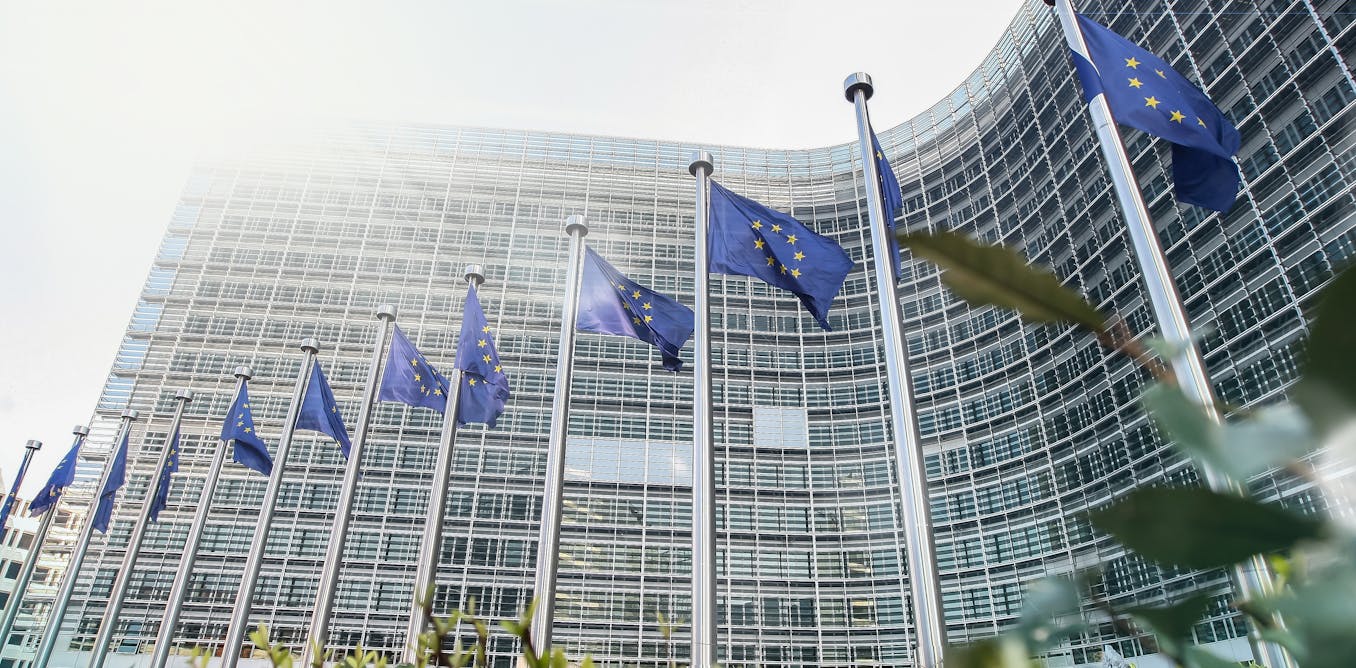
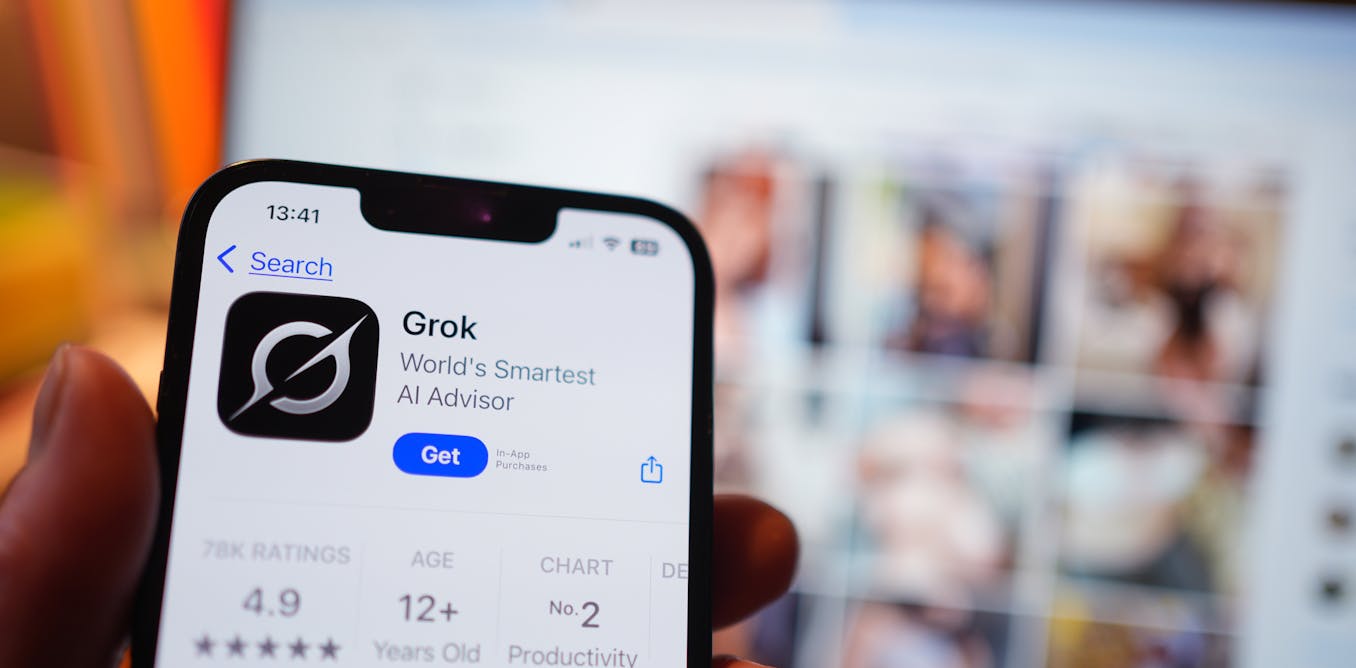
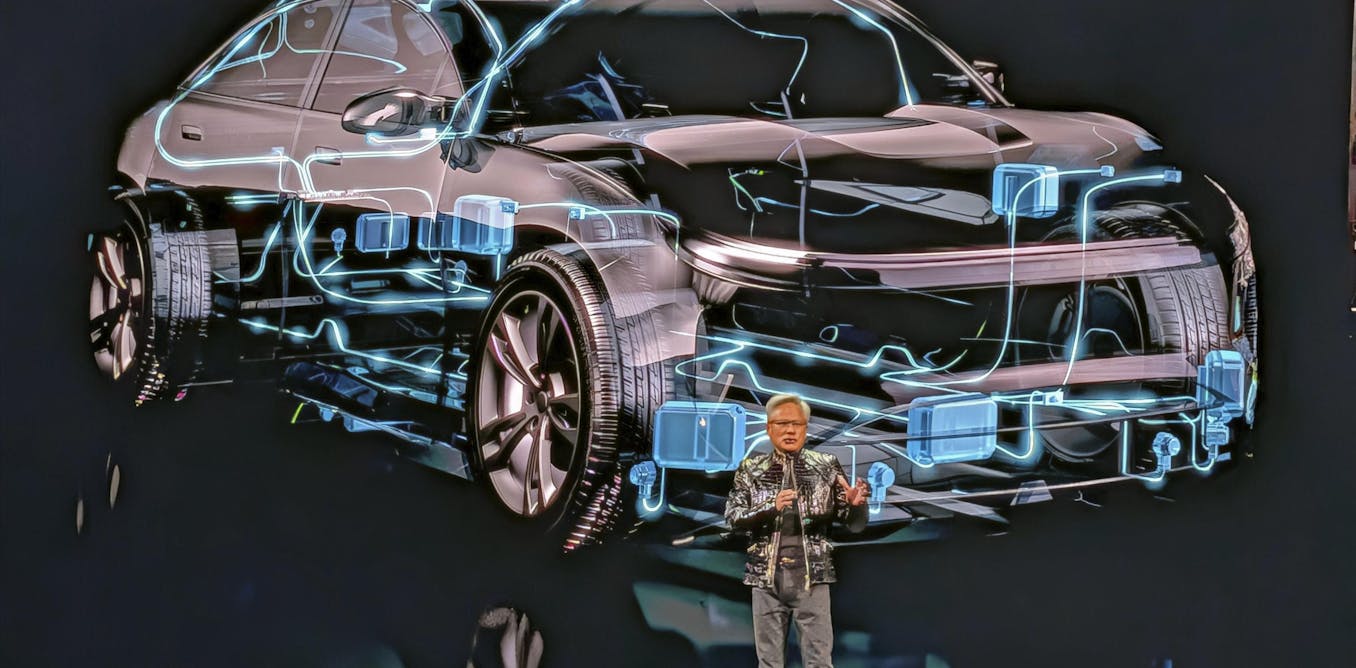







-2.png)


